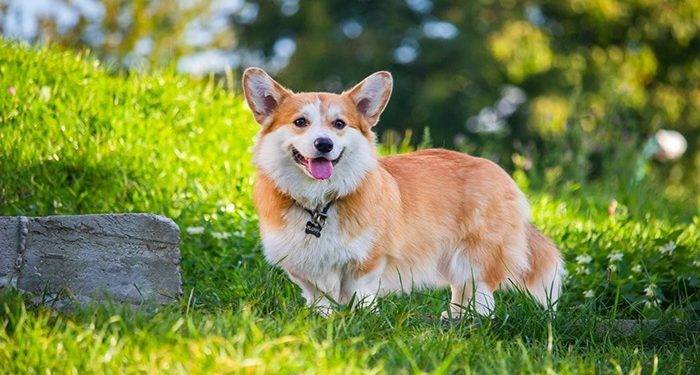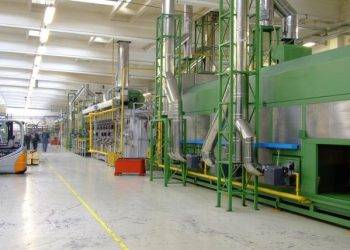Dog urine causing damage to lawns is a common issue for many dog owners. It can be frustrating to see patches of dead or discolored grass in your yard, especially when you’ve put time and effort into maintaining a beautiful lawn. In this article, we will explore the science behind why dog urine causes damage to lawns, the signs and symptoms of lawn damage caused by dog urine, the economic and environmental impact of dog urine on your lawn, the role of diet in preventing dog urine damage, the importance of proper lawn maintenance, the best ways to clean up dog urine and prevent further damage, and alternative solutions for preventing dog urine damage.
Key Takeaways
- Dog urine can cause significant damage to your lawn, leading to brown spots and dead patches.
- The high levels of nitrogen and salts in dog urine are the main culprits behind lawn damage.
- Signs of lawn damage caused by dog urine include yellow or brown patches, dead grass, and a strong odor.
- The economic impact of dog urine on lawn maintenance can be significant, with costs for reseeding, fertilizing, and watering adding up quickly.
- In addition to the economic impact, dog urine can also have negative environmental effects on your lawn and the surrounding ecosystem.
The Science Behind Dog Urine and Lawn Damage
Dog urine contains high levels of nitrogen, which can be beneficial for plants in small amounts. However, when dogs urinate on grass, the concentrated levels of nitrogen can cause damage. The chemical composition of dog urine can burn the grass and cause it to turn yellow or brown. Certain types of grass are more susceptible to damage than others. For example, Kentucky bluegrass and Bermuda grass are more resistant to dog urine damage, while fescue and ryegrass are more sensitive.
The Signs and Symptoms of Lawn Damage Caused by Dog Urine
The visual signs of lawn damage caused by dog urine are easy to spot. You may notice yellow or brown patches of grass where your dog has urinated. These patches may be surrounded by healthy green grass. It’s important to differentiate between dog urine damage and other types of lawn damage, such as fungal infections or insect infestations. One way to do this is by observing the pattern of the damage. Dog urine damage typically occurs in spots where your dog frequently urinates.
To identify problem areas in your lawn, you can use a UV flashlight or blacklight. Dog urine will fluoresce under UV light, making it easier to locate areas that need attention. Another tip is to water the area immediately after your dog urinates. This can help dilute the urine and minimize the damage.
The Economic Impact of Dog Urine on Lawn Maintenance
Repairing lawn damage caused by dog urine can be costly. You may need to reseed or resod the affected areas, which can be expensive. Additionally, dog urine can increase the frequency of lawn maintenance.
You may need to buy new turf online or water your lawn more frequently to dilute the urine and prevent damage. You may also need to use specific lawn care products, such as soil amendments or fertilizers, to repair the damage caused by dog urine.
The Environmental Impact of Dog Urine on Your Lawn and the Ecosystem
Dog urine can have a negative impact on your lawn and the ecosystem surrounding it. The high levels of nitrogen in dog urine can leach into the soil and contaminate groundwater. This can lead to water pollution and harm aquatic life. Additionally, dog urine can kill beneficial microorganisms in the soil, disrupting the natural balance of the ecosystem. It’s important to minimize the environmental impact of dog urine by taking proactive measures to prevent damage.
One way to do this is by watering your lawn immediately after your dog urinates. This will help dilute the urine and prevent it from causing as much damage. Another tip is to designate a specific area in your yard for your dog to urinate. This can help concentrate the damage in one area and make it easier to manage.
The Role of Diet in Preventing Dog Urine Damage
A dog’s diet can affect the composition of their urine and, consequently, its impact on your lawn. Certain foods, such as those high in protein or certain types of grains, can increase the nitrogen content in a dog’s urine. To minimize lawn damage, you can adjust your dog’s diet by feeding them a balanced and appropriate diet that is low in nitrogen. Consult with your veterinarian to determine the best diet for your dog’s specific needs.
It’s also important to provide your dog with plenty of water. This will help dilute their urine and minimize the concentration of nitrogen. Make sure your dog has access to fresh water at all times, especially during hot weather or periods of increased activity.
The Importance of Proper Lawn Maintenance in Preventing Dog Urine Damage
Proper lawn maintenance is crucial in preventing dog urine damage. Regular mowing, watering, and fertilizing can help keep your lawn healthy and resilient. Mowing your lawn at the appropriate height can promote strong root growth and make it more resistant to damage. Watering your lawn deeply and infrequently can encourage deep root growth and help dilute the urine. Fertilizing your lawn with a balanced fertilizer can provide the necessary nutrients for healthy grass growth.
Regular lawn care is also important in preventing dog urine damage. Removing pet waste promptly can prevent it from causing damage to your lawn. Raking or aerating your lawn can help improve soil drainage and prevent urine from pooling in one area.
The Best Ways to Clean Up Dog Urine and Prevent Further Damage
Cleaning up dog urine promptly is essential in preventing further damage to your lawn. You can start by diluting the urine with water immediately after your dog urinates. This will help minimize the concentration of nitrogen and prevent it from burning the grass. You can also use a hose or watering can to flush the area with water.
To prevent further damage, you can train your dog to use a designated area for urination. This can be a specific spot in your yard or a designated area with artificial turf or gravel. By training your dog to use this area, you can concentrate the damage in one spot and make it easier to manage.
Alternative Solutions for Preventing Dog Urine Damage to Your Lawn
There are several alternative solutions for preventing dog urine damage to your lawn. One option is to use products that can protect your lawn from dog urine. These products, such as urine-resistant grass seed or urine-neutralizing sprays, can help minimize the damage caused by dog urine. Another option is to create a designated area for your dog to urinate, such as a dog run or a designated spot with artificial turf or gravel.
Training your dog to use a designated area for urination is another alternative solution. This can be done through positive reinforcement training, where you reward your dog for using the designated area. Consistency and patience are key in this training process.
Taking Action to Protect Your Lawn from the Yellow Menace
In conclusion, dog urine causing damage to lawns is a common problem for many dog owners. Understanding the science behind why dog urine causes damage, recognizing the signs and symptoms of lawn damage, and taking proactive measures to prevent and repair the damage can help protect your lawn from the yellow menace. By adjusting your dog’s diet, practicing proper lawn maintenance, cleaning up dog urine promptly, and exploring alternative solutions, you can maintain a beautiful and healthy lawn while enjoying the company of your furry friend. Take action today to protect your lawn from dog urine damage and share your own tips and experiences in the comments section below.









